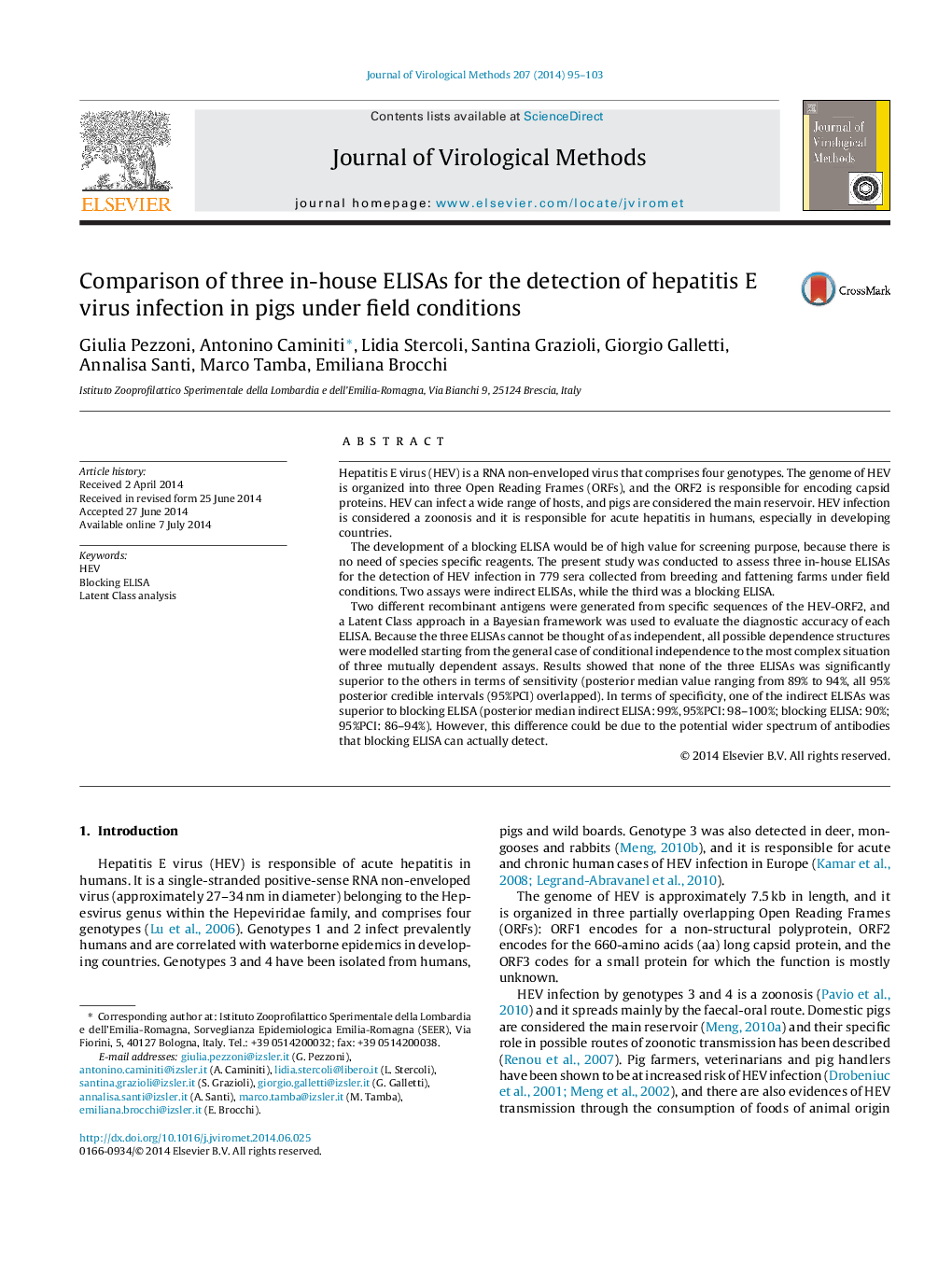| Article ID | Journal | Published Year | Pages | File Type |
|---|---|---|---|---|
| 6133596 | Journal of Virological Methods | 2014 | 9 Pages |
Abstract
Two different recombinant antigens were generated from specific sequences of the HEV-ORF2, and a Latent Class approach in a Bayesian framework was used to evaluate the diagnostic accuracy of each ELISA. Because the three ELISAs cannot be thought of as independent, all possible dependence structures were modelled starting from the general case of conditional independence to the most complex situation of three mutually dependent assays. Results showed that none of the three ELISAs was significantly superior to the others in terms of sensitivity (posterior median value ranging from 89% to 94%, all 95% posterior credible intervals (95%PCI) overlapped). In terms of specificity, one of the indirect ELISAs was superior to blocking ELISA (posterior median indirect ELISA: 99%, 95%PCI: 98-100%; blocking ELISA: 90%; 95%PCI: 86-94%). However, this difference could be due to the potential wider spectrum of antibodies that blocking ELISA can actually detect.
Related Topics
Life Sciences
Immunology and Microbiology
Virology
Authors
Giulia Pezzoni, Antonino Caminiti, Lidia Stercoli, Santina Grazioli, Giorgio Galletti, Annalisa Santi, Marco Tamba, Emiliana Brocchi,
